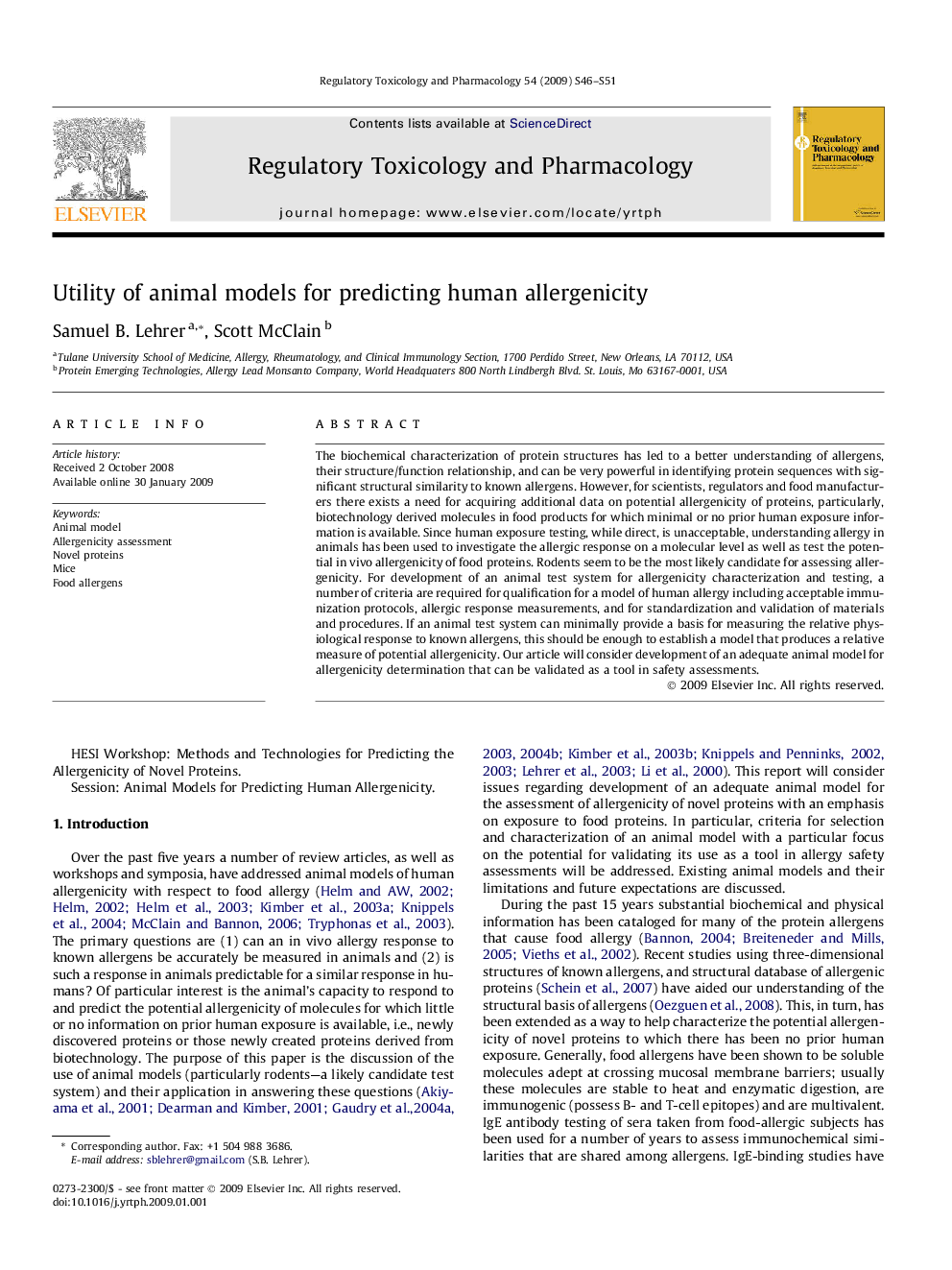| کد مقاله | کد نشریه | سال انتشار | مقاله انگلیسی | نسخه تمام متن |
|---|---|---|---|---|
| 2592737 | 1132043 | 2009 | 6 صفحه PDF | دانلود رایگان |

The biochemical characterization of protein structures has led to a better understanding of allergens, their structure/function relationship, and can be very powerful in identifying protein sequences with significant structural similarity to known allergens. However, for scientists, regulators and food manufacturers there exists a need for acquiring additional data on potential allergenicity of proteins, particularly, biotechnology derived molecules in food products for which minimal or no prior human exposure information is available. Since human exposure testing, while direct, is unacceptable, understanding allergy in animals has been used to investigate the allergic response on a molecular level as well as test the potential in vivo allergenicity of food proteins. Rodents seem to be the most likely candidate for assessing allergenicity. For development of an animal test system for allergenicity characterization and testing, a number of criteria are required for qualification for a model of human allergy including acceptable immunization protocols, allergic response measurements, and for standardization and validation of materials and procedures. If an animal test system can minimally provide a basis for measuring the relative physiological response to known allergens, this should be enough to establish a model that produces a relative measure of potential allergenicity. Our article will consider development of an adequate animal model for allergenicity determination that can be validated as a tool in safety assessments.
Journal: Regulatory Toxicology and Pharmacology - Volume 54, Issue 3, Supplement, August 2009, Pages S46–S51